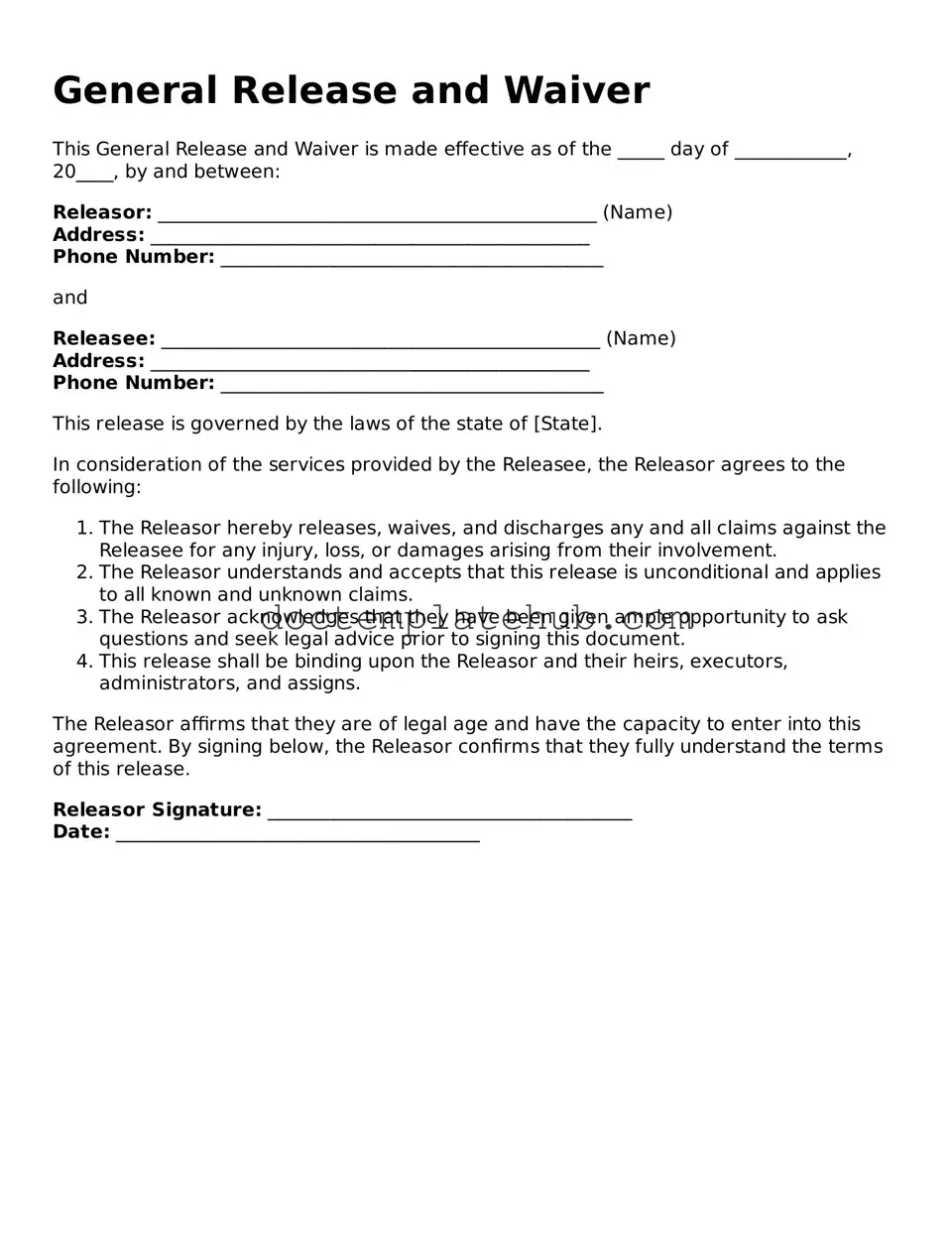What is a General Release and Waiver form?
A General Release and Waiver form is a legal document that allows one party to relinquish their right to pursue any claims or legal actions against another party. By signing this form, the individual agrees not to hold the other party responsible for any potential future claims related to a specific event or activity.
Why would someone need to sign a General Release and Waiver form?
Individuals often sign this form to protect organizations or individuals from liability. For example, if you participate in a recreational activity, the organization may require you to sign this document to ensure that you cannot later sue them for injuries or damages that may occur during the activity.
What are the key components of a General Release and Waiver form?
This form typically includes the names of the parties involved, a description of the activity or event, a statement of release, and the signature of the individual releasing their rights. It may also outline any specific risks associated with the activity and clarify that the signer understands these risks.
Is a General Release and Waiver form legally binding?
Yes, once signed, a General Release and Waiver form is generally considered legally binding. However, its enforceability can depend on various factors, including the clarity of the language used and whether the signer fully understood what they were agreeing to at the time of signing.
Can a General Release and Waiver form be revoked after signing?
In most cases, once you sign the form, you cannot revoke it. However, there may be exceptions based on state laws or if the release was signed under duress or without informed consent. It's essential to understand what you are signing before you commit.
Are there any risks associated with signing a General Release and Waiver form?
Yes, there are risks. By signing, you may be giving up your right to seek compensation for injuries or damages that may occur. It is crucial to read the document carefully and consider the potential consequences before signing.
Who should review a General Release and Waiver form before signing?
It is advisable for anyone considering signing this form to have it reviewed by a legal professional. An attorney can help clarify any confusing language and ensure that you understand your rights and obligations under the agreement.
Can minors sign a General Release and Waiver form?
Minors typically cannot sign legal documents without parental or guardian consent. Therefore, if a minor is involved, a parent or guardian usually needs to sign the form on their behalf to make it valid.
What happens if a General Release and Waiver form is not properly filled out?
If the form is not filled out correctly, it may be deemed invalid. This could lead to complications if a claim is later filed. Ensuring that all required fields are completed and that the document is signed appropriately is essential for its enforceability.
How does a General Release and Waiver form differ from other legal agreements?
This form specifically focuses on releasing liability and waiving rights to claims, unlike contracts that may involve obligations or exchanges of goods and services. It is primarily about risk management and liability protection, making it unique in its purpose.
